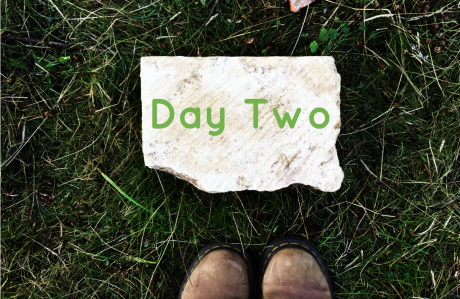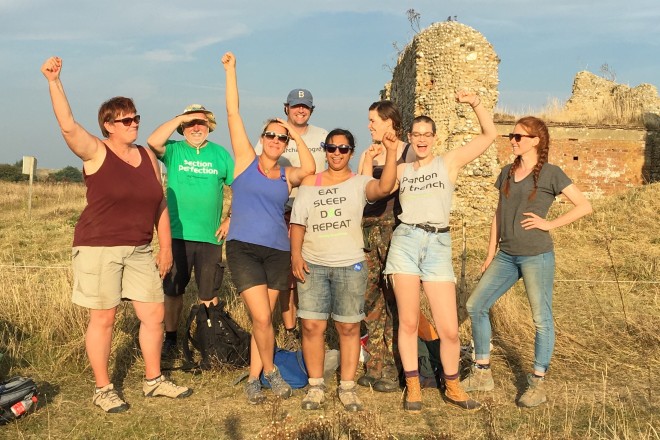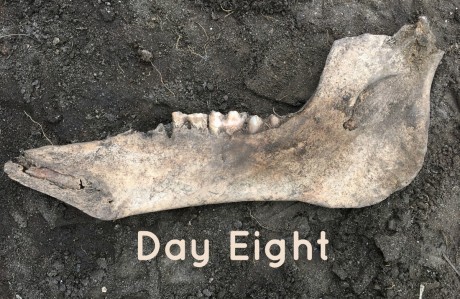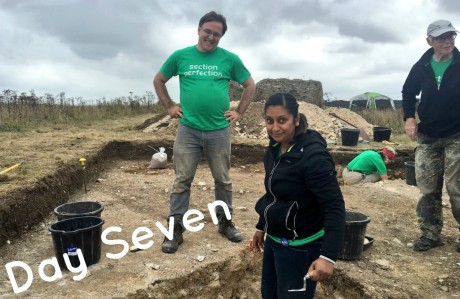
Sometimes, it’s surprising what grabs your attention. Today, it was a great, big limestone block
We’d already marked out the trenches with millimeter accuracy, so we were ready to spend the day getting our trenches open. We weren’t necessarily ready to make a significant discovery quite so soon!
Lying there in the dirt was the crispest, whitest block of dressed limestone you ever did see. The edges were sharp, and on one side, you can even see the mason’s mark from where it had been cut from a bigger block of stone. It looked as fresh as the day it was cut, all the way back in the 12th century.
Sure, you’re bound to see blocks of limestone when you’re excavating a medieval site. In fact, our crowdfunders have found plenty on earlier excavations, but those blocks have all had hundreds of years of weathering.
This one was different. This one was as crisp as the day it was cut.
One of the things we kept coming back to was just how very clean it was, and after all those years underground too! But of course, unweathered by elements, unworn by the passage of time, and buried before the days when pollution made all stone buildings look grimy with a few years, it was a potent reminder of the excitement our priests the moment the priests decided to settle and start building their first home out here on the Suffolk coast.
But this single block of limestone is more than just an artefact to contemplate; if we want to unearth the truth about the priests who lived here, then the first thing we have to do is find their abbey.
The chapel you can see in the pictures is just a tiny part of it – the rest is still hidden underground, where it has lain undisturbed for the last 700 years. That limestone block represents our first step towards finding it. With the sun shining down, with Diggory there to cheer us on, and with such a distinctive find so early on, it feels like our last season investigating medieval Suffolk is off to a very good start!



